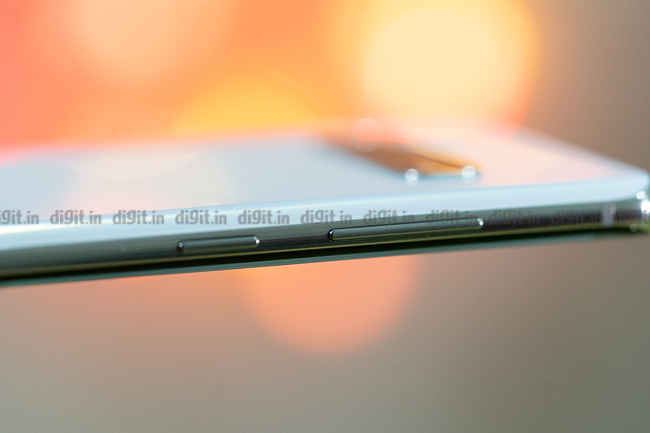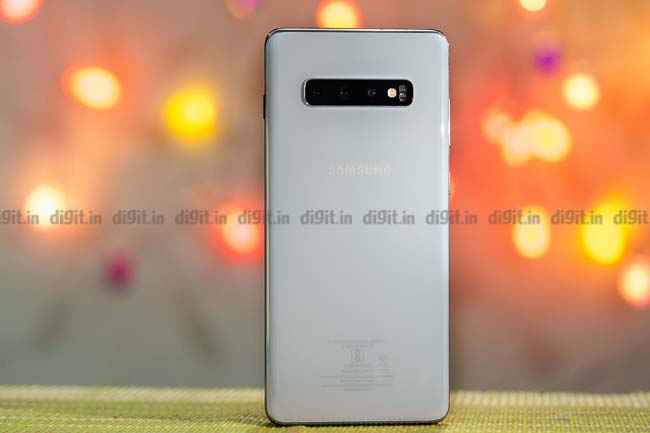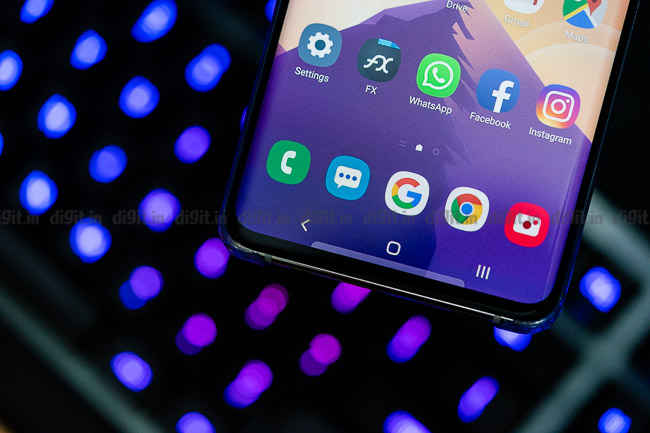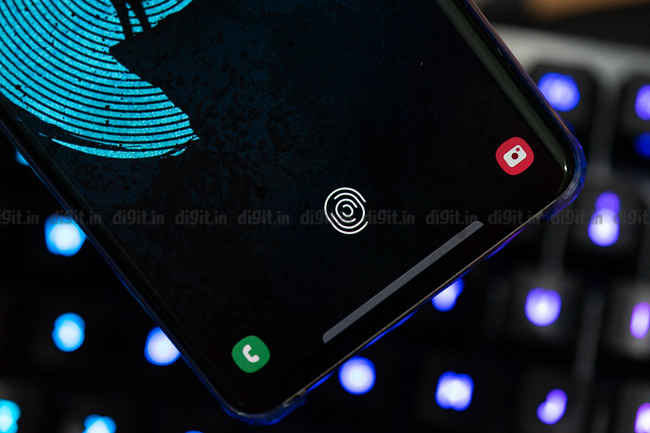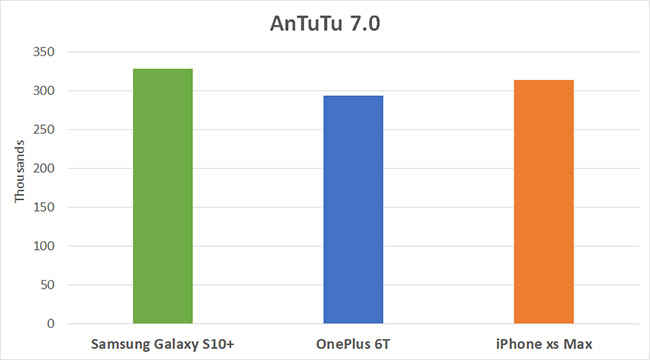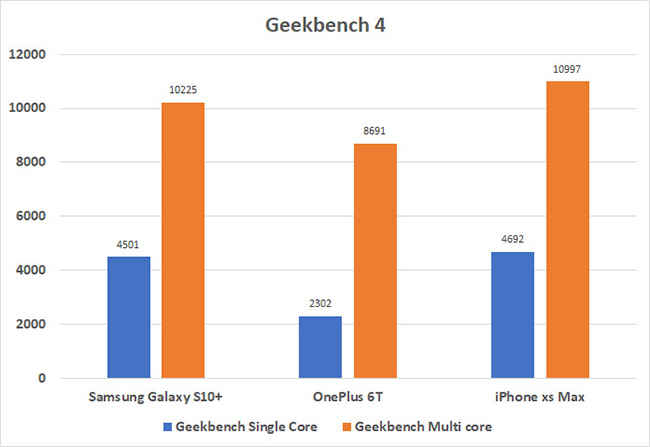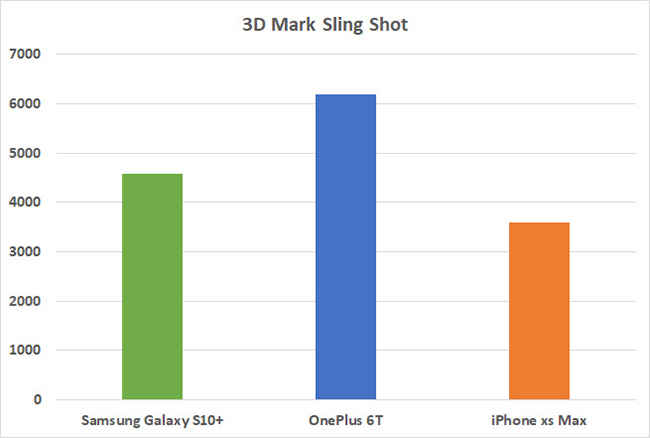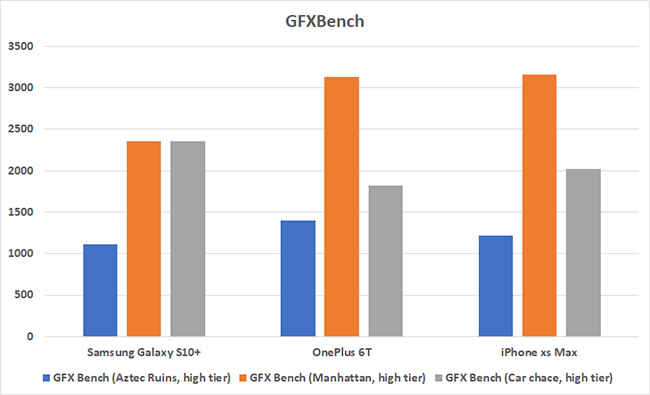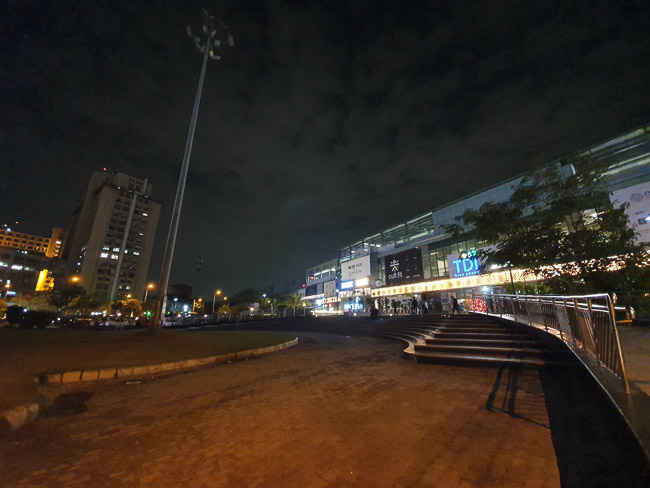Samsung Galaxy S10 Plus Review : Brilliant in so many ways, lacking in some
The Samsung Galaxy S10 Plus offers a host of new features, a new design and for the first time, a triple camera setup on the rear. The new Exynos 9820chipset manages to finally rack up impressive benchmark numbers which are corroborated with daily usage and the 4100mAh battery does not disappoint. The camera, though working as advertised, does need some improvement. All things said and done, the Samsung Galaxy S10 Plus is a smartphone worthy of your money.
What’s in the Box
Samsung Galaxy S10 Plus
Power Adapter
USB Type-C cable
Sim Ejector Tool
AKG tuned earbuds
OTG converter
Hard plastic protective case
Key Specifications
Processor: Exynos 9820
RAM: 8GB LPDDR4x
Display Size: 6.4 inches
Display Resolution: 3040 X 1440
HDR Support: HDR10+
IP Rating: IP68
Battery Capacity: 4100mAh
Build and Design: Refining that, which isn’t broken
When Samsung launched the Galaxy S7 Edge, the company had come up with a design that would come to define its flagship series. Now, the curved displays are the default in Samsung’s flagship phones. The glass back and front is held firmly together by a solid aluminium frame. Samsung shared the Prism White variant of the phone with us, and it has to be said that the finish is definitely unique. The white on the back shifts in hue from white, to pink, to blue, depending on how light bounces off it. Being white in colour, the highly fingerprint-friendly nature of the phone is well hidden. You may not be so lucky with the Prism Black and Prism Blue colours.
The phone’s design is for the most part identical to the previous year’s S9+, save for some obvious changes. While the display is bigger, what stood out particularly was that the power button was placed way too high on the left side of the frame. While I have relatively small hands, everyone who I had try the phone said the exact same thing; the power button is placed inconveniently high. However, it isn’t something you can’t get used to. I just hold the phone a little higher than normal, which in any case gives a better grip of the phone.
The polished aluminium frame holds the glass on the front and back firmly in place
The phone, being made of Gorilla Glass 6 on the front and Gorilla Glass 5 on the back is extremely slippery and required to be placed in its case for safety. In our testing, the phone started to slip at an incline of just 5 degrees on a polished plywood surface, which does not bode well. In real life scenario, this means that even the slightest incline paired with the vibrations of an incoming call could cause the phone to slip off the shelf and fall.
A few other notable features of the new Samsung Galaxy S10 Plus happen to be the more Note-inspired curvature. The Galaxy S9 and S9+ had more pronounced curves on the top and bottom corners, but the S10 Plus’s curvature resembles that of the Note 9. The crisper corners are nice as it gives the phone a stronger presence. The other immediately noticeable feature of the S10 Plus’s design is how light it is. Weighing in at 175 grams for the non-ceramic version, the phone is 14 grams lighter than its predecessor, despite a denser battery and a bigger form-factor.
The sharper curves are reminiscent of the Samsung Galaxy Note 9
In our books, the Samsung Galaxy S10 Plus is a gorgeous smartphone. Some might even say that it is the best-looking smartphone that has come out so far. However, the slippery nature of the device warrants that you put it in a case, which does take away from its slim and light form-factor.
Display: Bettering the Best
The most notable feature about the Samsung Galaxy S10 Plus’s display is that it supports HDR10+. An upgrade to the HDR10 standard, HDR10+ now encodes per-frame metadata into a video, and in order to be compliant with the standard, Samsung had to develop an OLED panel that could dynamically adjust based on the frame’s metadata. This by itself is incredibly impressive. The 6.4-inch display sports a resolution of 3040 X 1440, pegging the panel’s pixel density at roughly 522ppi. We have come to expect high pixel densities from Samsung on their flagship, so this is nothing new.
The sub-pixel arrangement of the Samsung Galaxy S10 Plus
Interestingly, unlike last year, the Samsung Galaxy S10 Plus only offers two display modes; Vivid and Natural. Choosing Vivid enabled the phone’s wide colour gamut colour space, ideal for those who like saturated colours and would be viewing content in HDR from Netflix. The natural colour profile switches the display over to the sRGB colour space, ideal for those who want to view photos and non-HDR videos in their true colour space. Essentially, if you’re a content creator, the Natural setting is the right choice for you and if you’re a voracious watcher of online videos, then you may be better off using the Vivid setting for the display.
We tested the maximum and minimum display brightness for the display and found some very interesting results. The display has a maximum brightness of 650 nits when the brightness is turned up manually. However, if the auto-brightness setting is enabled, the system can push the display to over 1000 nits of brightness. The display also achieves this level of brightness when playing HDR10 content, but since it is not for a sustained period of time, it is hard to notice.
Still one of the best smartphone displays
Thanks to such a high level of brightness, the Samsung Galaxy S10 absolutely dominates the bright outdoors. Whether it's watching videos or just conducting day-to-day business on the phone, the sunlight would not drown out the visibility of the display, and reflections wouldn’t get in the way of the content. Even in bed, you can turn the brightness down all the way to a decent 2 nits so that using the phone won’t hurt in pitch dark.
The display itself is undisputedly class-leading and for the first time, Samsung is shipping their smartphone with a screen protector pre-applied. This is very helpful as it prevents scratches from appearing on this otherwise gorgeous display. Unfortunately, we ended up taking the screen protector off our review unit and found the surface of the display to be extremely slippery to the touch. We don’t think the screen would retain this quality after prolonged use, but we will update you on the state of the device in 6 months.
Ultrasonic Fingerprint Sensor: Good, getting better
Even before the Samsung Galaxy S10 Plus hits store shelves, Samsung has pushed out an OTA update that brings improved performance to the in-display ultrasonic fingerprint sensor. When the phone landed in our test labs, there was no trouble in registering the fingerprints. Since then, the phone has had a negligible rate of failure, that is, instances where it did not recognize my fingerprint. After having used the Huawei Mate 20 Pro for the better part of the last few months, the position of the fingerprint scanner on the Samsung Galaxy S10 has taken some getting used to.
The active area for the scanner is just above where the home button “should be.” Through constant usable, you should be able to get used to its placement rather easily. Typically, when you lift the phone to unlock it, the display will light up, highlighting where to place the finger for the fingerprint sensor to work, making the process of unlocking the phone easier.
In terms of speed, the fingerprint sensor does work fast, although it is nowhere close to the speed of the traditional capacitive fingerprint sensors. When compared to the optical-based in-display fingerprint sensors, we have not yet been able to come to a conclusive decision on who’s faster due to mixed results. Regardless of that, the scanner is fast enough for the phone to unlock seamlessly. You won’t find yourself having to wait for the phone to unlock.
The ultra-sonic in-display fingerprint sensor works reliably, although its a hair slow
The advantage of having an ultrasonic fingerprint sensor is that this type of method is immune to the presence of dirt and water. We were successfully able to unlock the phone 27 out of 30 times using a heavy dirt laden finger (dry dust) and recorded 24 out of 30 successful unlocks with wet fingers.
Overall, we are very happy with the effectiveness of the in-display fingerprint sensor on the Samsung Galaxy S10 Plus. Sure it's not the fastest out there, but it is still fast enough to not come across as slow. Additionally, the speed of the sensor is something that Samsung can improve over time with software updates like they already have done pre-launch. If you do end up buying the phone, we recommend running the update before getting involved with the fingerprint sensor.
Performance: Smokin’ Fast
The Samsung Galaxy S10 Plus is powered by the Exynos 9820 processor built on an 8nm process. The SoC comes with 8 cores in three clusters. The four small/efficiency Cortex A55 cores are clocked at 1950MHz, the dual middle Cortex A75 cores are clocked at 2314MHz while the remaining 2 performance Exynos M4 cores are clocked at 2730Mhz. The tri-cluster design is fast becoming popular as it allows the chip to remain power efficient by activating specific cores based on the task at hand. The Exynos 9820 is paired with 8GB of LPDDR4x RAM, enough for your work and play needs. The Exynos chips have always been beaten upon for being slower than their Snapdragon counterpart, but we were very curious to see just where the new Exynos chip fell in terms of performance metric. So we put it through our set of CPU and GPU synthetic benchmarks.
We began our testing by running GeekBench, where the Samsung Galaxy S10 Plus scored 4501 and 10225 on Single and Multi-core respectively. In comparison, the OnePlus 6T with its 10GB of RAM scored 2302 and 8691 on the same benchmark while the Note 9 scored 3758 and 9062. On AntuTu, the S10 Plus scores a commendable 328402, the highest score we have seen on the benchmark in our lab so far.
The Samsung Galaxy S10 Plus scores highly on the AnTuTu test
Geekbench Single and Multi-Core results for Samsung Galaxy S10 Plus
Moving over to the GPU part of the test, we weren’t all that convinced that the Mali G76 could claw its way to the top, given that Qualcomm’s Adreno GPUs have always been leaps ahead. Again, we were surprised to find that the Samsung Galaxy S10 Plus scored either the highest or in the top 3 for GPU benchmarks. On GFX Bench’s Car Chase and Manhattan benchmarks, the phone scored an impressive 2358 and 2356 respectively. On 3DMark’s Slingshot, the S10 Plus clocks a score of 4584, once again the highest score we have seen on the benchmark.
While all the benchmarks were running, we verified that the performance was not being artificially boosted by recording real-time CPU and GPU speeds and validating those numbers against the load on each part of the chip. We also corroborated the benchmark results in our real-world usage tests.
3D Mark Slightshot results
Samsung Galaxy S10 Plus gets a good score on GFXBench
Our test began with multiple gaming sessions on PUBG Mobile and Asphalt 9. We used Gamebench to once again record real-time metrics for frame rates to see how the phone was behaving. With both PUBG Mobile and Asphalt 9 set to their highest respective graphical settings and got to playing. We recorded metrics for matches and races so as to get a fair metric. We noted a median frame rate of 28fps for Asphalt 9 while on PUBG Mobile, we got a median frame rate of 30fps with a 90 percent stability rate. While playing PUBG itself was a smooth experience, there were points during Asphalt 9 where we definitely saw some tearing. Unfortunately, we noted this behaviour multiple times, at specific points in the race. We played both the games with the phone set to performance mode. We’re hoping that subsequent updates to the game and OS would improve the performance a little more.
When it comes to day-to-day use, however, the Samsung Galaxy S10 is an absolute treat. Over the course of the last 10 days, I have written a few news stories on the Samsung Galaxy S10 while commuting. Writing stories often also includes putting together images. I normally shoot product shots on my Sony A7 MarkII, so I can quickly transfer files from the camera to the phone over wi-fi. These 24-megapixel full resolution images are then edited in either Lightroom mobile or Snapseed. In fact, half the product shots in this review were edited in Lightroom Mobile, but you wouldn’t be able to tell which. During the edit, there were no hiccups or delays in preview renders, which is pretty much what you would expect from a flagship device.
We were left very impressed by the new SoC and associated components, which allows the Samsung Galaxy S10 Plus to score highly on our performance benchmarks. Sure, the Snapdragon 855 may be faster, but we’re at the point where flagships have gotten fast enough for the differences to be barely noticeable. In our testing, we found no reason to be left unhappy with the S10 Plus’s performance, which is rather rare for us, especially this early in the year.
Primary Camera: When three’s company
Last year, Samsung used the camera as a key differentiator between the S9 and the S9 Plus. This year, that difference does not exist as both the phones come with a triple camera. For those buying either of the phone, you get a 16MP ultra-wide camera (12mm) with an aperture of f/2.2. This camera doesn’t come with AF or OIS. The primary camera has 12-megapixel resolution and a dual aperture mechanism going between f/1.5 and f/2.4. This camera sports Samsung’s dual pixel AF and OIS, along with offering a 26mm field of view. The third camera is sporting a telephoto lens with an aperture of f/2.4 along with OIS and PDAF. We’ve seen this kind of a configuration from both Huawei and LG in their flagships, so Samsung does have stiff competition. We are going to break the camera review into smaller pieces because there is a lot to talk about here. There’s a lot going on with the S10’s camera, so we have done a separate, in-depth analysis of the camera which we recommend you read.
Disclaimer: All camera samples below have been resized for web. To see the straight out of camera JPG files, please go to our Flickr Gallery
The primary camera by itself performs as admirably as you’d expect from a Samsung flagship smartphone. This is the first time Samsung’s put an ultra-wide-angle lens on a flagship camera, and we noted that it has significant amounts of barrel distortion which will be noticeable in your shots. The primary and telephoto cameras, on the other hand, do not exhibit any noticeable distortion.
Low light shot from Samsung Galaxy S10 Plus's primary camera
HDR algorithms balance shadows and highlights very well
The 12mm ultra-wide angle lens has significant distortion, but creative framing can use it to your benefit
Low light shot from the 12mm ultra-wide angle camera
The 52mm telephoto lens produces photos with impressive details
In terms of image quality, day time results from all three cameras are impressive in terms of sharpness, colour reproduction and contrast. The overall dynamic range is also good, given that the camera is applying HDR on its own. The AF system is fast and works reliably for both the regular and telephoto lenses. The ultra-wide 12mm lens does not have capabilities and neither does it have (or need) OIS.
The low light performance of the Samsung Galaxy S10 Plus is once again impressive, at least in the way that you are more likely than not to get a properly exposed shot. What you do lose, however, its accurate colour reproduction, detail and sharpness. The main camera still manages to produce usable photos, but the ultra-wide and telephoto lenses are not of much help, due to their small apertures. The Super Night shot which is supposed to improve low light photography is buried at the very bottom of the scene optimiser’s priority list and hardly ever kicks in. Even in the rare occasion that it does, it does so only after 5-8 seconds which is way too long for any kind of AI to be taking.
Overall, the Samsung Galaxy S10 Plus has a camera that manages to work as well as its flagships from last year, but the new features introduced (which are many) need serious improvements. Thankfully, most of this can be done through software updates, so hopefully, S10 users will get to enjoy improved imaging experience.
Selfie Camera: More is less
The Samsung Galaxy S10 Plus features two cameras in the front, a primary 10-megapixel shooter with an aperture of f/1.9 and dual pixel AF. The secondary 8-megapixel camera is there purely to aid in depth information and does not actually produce any images. When taking selfies, you can choose a closer view of your face, with the resulting image being around 5-6 megapixels. Switch to the full perspective and you get the whole 10-megapixel resolution, and enough room to fit in at least 3 more people with you in the frame.
Indoor selfies turn out okay
Daytime selfies do turn out great
Low light selfies can definitely be improved
In terms of the image quality, the S10 Plus produces some of the best selfies out there, with adequate sharpness and enough detail retention. Day time shots regardless of whether they’re taken in the shade or against the sun did come out very impressive and we’re pretty happy with the output. Low light photos, on the other hand, are not impressive at all. You’d be better off using the flash.
OneUI: Samsung’s software comes of age
The OS pre-loaded on the Samsung Galaxy S10 Plus is Samsung’s newest OneUI based on Android 9 Pie. OneUI is a testament of just how far Samsung has come from its iOS copycat OS days. The operating system is elegant, clean and easy to navigate. It does offer enough customization options for both the look and feel and the performance aspects of your device. OneUI offers the traditional on-screen navigation buttons, but also offers a gesture-based system which is pretty unique. Instead of going with the iOS-like gestures, Samsung’s implementation involves swiping up only to get around the OS. Samsung still refuses to let users apply third-party themes or icon packs, and instead, requires users to use its own theme engine.
OneUI is built on Samsung’s Knox secure platform, which means besides Samsung Pay, you also get the Secure Folder which allows you to move files and apps within a secure, encrypted and completely isolated part of the storage. What this means is that content within Secure Folder is not visible to file explorers and apps can only be accessed by unlocking the folder.
Battery Life, Wireless and Reverse Wireless Charging
The Samsung Galaxy S10 Plus is packed with a 4100mah battery capable of fast wireless charging. The new trick here is that the S10 Plus also packs reverse wireless charging, which you can use to charge another smartphone, smartwatch or even the Galaxy Buds.
On the Geekbench battery life test, the phone lasted about 6 hours and 20 minutes. During our gaming tests, we noticed that the battery dropped by 6-8 percent for 15 minutes of playtime on PUBG Mobile and Asphalt 9 each. Streaming Altered Carbon in HDR via the Netflix app cost us 18 percent battery life per episode. In day to day usage, the phone lasted a day and a half, being pulled off the charger at 8 am and being needed to be charged back up around noon the next day.
Speaking of charging, we noted that the Samsung Galaxy S10 Plus can go from 2 percent battery to 100 percent in 94 minutes. An hour and a half to charge up a 4100mAh battery is impressive. Reverse charging also works as advertised, but is slow if you're trying to charge another smartphone. This feature best works for charging small accessories like the Galaxy Buds or even a smartwatch that doesn't use a proprietary connector or charging method.
Bottomline
The Samsung Galaxy S10 Plus is quite a banger of a phone and a great sign of things to come, from Samsung and hopefully other manufacturers in the months to come. It has one of the best displays we’ve tested and with the HDR10+ certification, you’re looking at a device that’s great for content consumption. The phone packs enough power under the hood to be able to handle anything you throw at it. As an imaging device, the phone continues to be as impressive as last year’s offerings, but some of the new features introduced this year need to be improved, especially the Super Night shot feature, which needs to be its own mode and not a scene optimizer setting. If you’re considering buying the Samsung Galaxy S10 Plus, it would definitely not be a bad one.
Swapnil Mathur
Swapnil was Digit's resident camera nerd, (un)official product photographer and the Reviews Editor. Swapnil has moved-on to newer challenges. For any communication related to his stories, please mail us using the email id given here. View Full Profile

